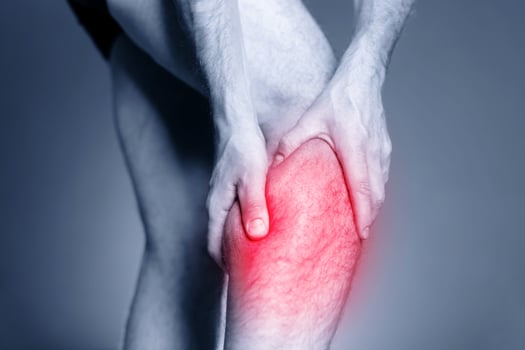
With discectomy surgery, muscles and other tissues around where the spinal disc is operated on can become a bit irritated due to the simple fact that surgery is being performed in the area. This can result in some post-surgery discomfort that gradually subsides. As for whether you may experience muscle spasms as a result, this is a possibility as you heal and recover. This article explains what you need to know and how to manage any resulting discomfort.
What Is a Muscle Spasm?
A muscle spasm occurs when muscles suddenly contract. The tension from this action causes the resulting pain. As mentioned above, muscle spasms sometimes lead to pain that extends throughout the surgery location. In some instances, leg pain may occur as well.
How Can Muscle Spasms Affect Recovery?
Muscle spasms can temporarily slow down your recovery after discectomy surgery, even if you had a less invasive type of procedure called a microdiscectomy. For example, you may be hesitant to do any physical therapy exercises at home between regular sessions. Inactivity can also trigger muscle spasms. Therefore, if you become less active during your discectomy recovery period, you may experience more muscle spasms. Muscle spasms can also contribute to:
• Lack of sufficient sleep
• Sciatic nerve pain
• Radiating nerve-based symptoms
You are more likely to experience nerve-based issues if muscle spasms continue on a regular basis. The potential risk is experiencing symptoms similar to those you were dealing with prior to surgery, especially if the nerve that was previously irritated is the sciatic nerve. In this instance, pain may be a bit more noticeable, since muscle spasms could aggravate a nerve that is still recovering from being irritated by a herniated spinal disc.
Reasons for Muscle Spasms Following a Discectomy
Not being active enough after your surgery is one reason you may experience muscle spasms. It is natural to want to take it easy as you recover. However, it is better to gradually increase your activity level. As you engage in more extensive physical activity, muscle spasms can occur as your muscles are stimulated again. You may also experience spasms that contribute to lower back and leg pain if you overdo it during the early stages of recovery.
Managing Post-Surgery Muscle Spasms
One step you can take to manage muscle spasms is to continue to be actively involved in your physical therapy sessions. This helps by strengthening the muscles around the surgery location, which reduces the frequency of muscle spasms. Additional steps you can take to manage post-surgery muscle spasms include:
• Taking medication to minimize inflammation that can trigger muscle spasms
• Applying heat to the affected area with a heating pad or heating gel to increase circulation
• Applying ice or cold packs to the area where you are having spasms to ease inflammation in a more immediate way
• Doing gentle stretches to loosen muscles and reduce the risk of having muscle spasms
Pain levels and recovery time after herniated disc surgery such as a discectomy vary among individuals and depend on factors such as disc height and the size of the hole left in the outer ring of the disc after surgery. If the hole in the disc is larger than a standard pencil eraser, the patient has a significant risk of reherniation. Patients with a large hole in the outer ring of the disc are more than twice as likely to reherniate after surgery. These reherniations often require additional surgery or even a larger spinal fusion operation. Barricaid is a bone-anchored device shown to reduce reherniations by closing the hole in the disc after a discectomy, and 95 percent of Barricaid patients did not undergo a reoperation due to reherniation in a 2-year study timeframe. This treatment is done immediately following the discectomy—during the same operation—and does not require any additional incisions or time in the hospital.
If you have any questions about the Barricaid treatment or how to get access to Barricaid, you may ask your doctor or contact us at 844-288-7474.
For full benefit/risk information, please visit: https://www.barricaid.com/instructions.


Comments